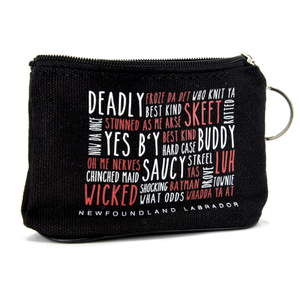By Nicola Ryan
For almost a century, the Spirit of Newfoundland has held a flaming torch of bronze in her hand high atop Newfoundland and Labrador’s National War Memorial in downtown St. John’s, NL. Through all winds and all weather, she’s stood sentinel over the memory of those who offered their freedom and their lives to the Great War. Her gaze is steady, pointed towards the Narrows, where so many young men sailed away to France to meet their fates for King and Country.
For all these years, the War Memorial has served as a place of reflection and a centre of historical and emotional significance to the people of Newfoundland. Recently it’s been undergoing a massive restoration project, and the redesign includes an incredible element – the inclusion of a Tomb of the Unknown Solider.
The restoration project was made possible through the efforts of the Royal Canadian Legion Pleasantville Branch 56, Veterans Affairs Canada and the Commonwealth War Graves Commission. It includes upgrades to the granite monument; replacement of the concrete stairs, walkways, curbs and metal railings; installation of new and upgraded lighting; and the inclusion of a tomb of granite for the Unknown Solider as its centrepiece.
Some 1,700 Newfoundlanders and Labradorians died in service during the First World War, including the many who fell at Beaumont-Hamel on July 1, 1916. Of those who died, some 800 have no known grave. For a hundred years, as the mud and chaos of the battlefield gave way to peace and tranquility, the unidentified have lain alongside their comrades, tombstones etched with the words Known Unto God. One of these unidentified Newfoundland soldiers will be repatriated and laid to rest in a special ceremony marking the 100th anniversary of the National War Memorial on July 1, 2024.
Comrade Gerald Budden, president of the Royal Canadian Legion – Newfoundland Labrador Command, recalls the legacy of Lieutenant Colonel (Padre) Thomas Nangle, the military chaplain of the Royal Newfoundland Regiment during WWI who was the driving force behind the creation of the War Memorial in St. John’s. Padre Nangle worked tirelessly to commemorate Newfoundland’s role and sacrifice during the First World War. On behalf of the government, Nangle acquired a large section of the Somme battlefield at Beaumont-Hamel in France to preserve in perpetuity. He also proposed and oversaw the creation of the “trail of the caribou,” marking five battlegrounds significant to the Royal Newfoundland Regiment with statues of its emblematic animal rendered in bronze by artist Basil Gotto. Beaumont-Hamel was recently included with 50 other Commonwealth War Graves monuments and cemeteries granted World Heritage status by the United Nations Educational, Scientific and Cultural Organization (UNESCO).
In a press release about the Tomb of the Unknown Solider project, Budden says, “On the eve of the 100th anniversary of the official unveiling of our National War Memorial and its component repatriation project, I assure our veterans, past and present, their families and loved ones, that ‘At the going down of the sun, and in the morning, We will remember them.’”
The Unknown Solider is set to be repatriated from one of the battlefields on the western front in northern France. He will first lie in state at the Confederation Building in St. John’s before the internment ceremony.
“The return of the remains of an unknown Royal Newfoundland Regiment soldier, who made the ultimate sacrifice during the First World War, acknowledges the efforts and sacrifices of Newfoundlanders and Labradorians who fought in all services, past and present,” says the Honourable Steve Crocker, minister of Tourism, Culture, Arts and Recreation, in a prepared statement. “The Newfoundland National War Memorial is a solemn reminder for future generations of those who served and who continue to serve.”
The Spirit of Newfoundland and the other figures on the St. John’s War Memorial encapsulate the spirit and resilience of Newfoundlanders and Labradorians, and serve as an enduring reminder of the sacrifices of war that were felt in every town, cove and outport during those dark days.
The preservation of heritage landmarks like the St. John’s War Memorial is vital for maintaining a connection to our past. These memorials not only honour the memory of those who served, but also help educate and inspire future generations about the importance of peace, freedom and the consequences of war. Hopefully the St. John’s War Memorial will continue to stand for another 100 years – a solemn reminder of Newfoundland’s contribution to peace and freedom, a beacon of hope and gratitude as timeless as the flame in the torch held high.










